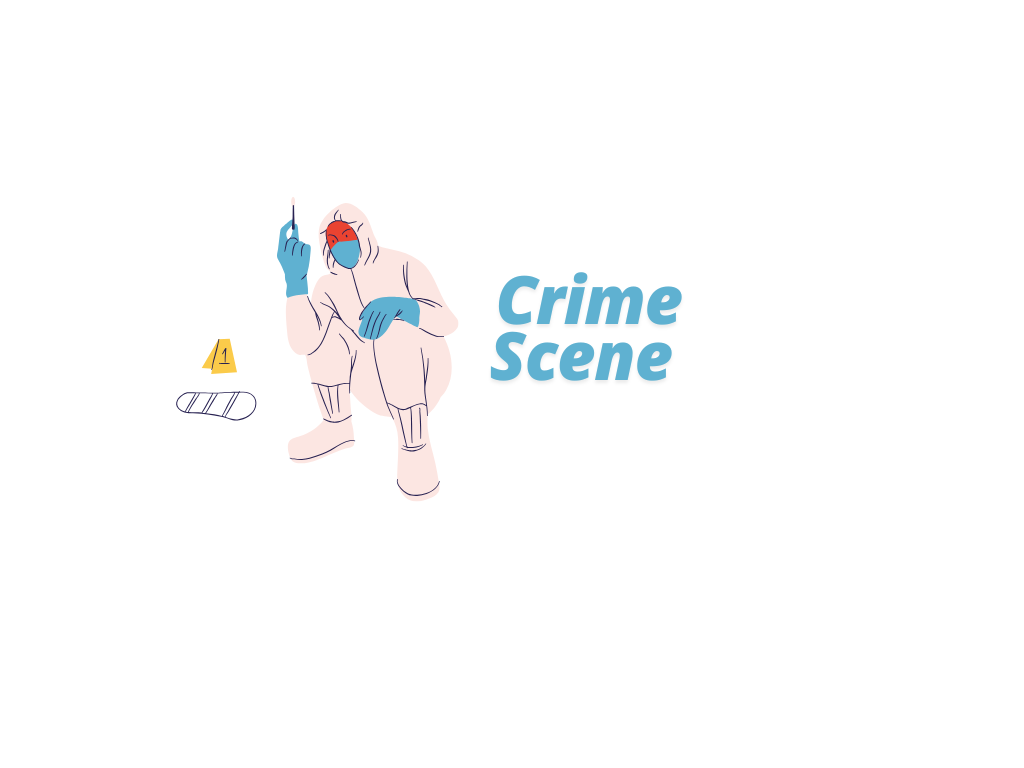Crime
A crime refers to any human action or inaction that violates a legal rule established to protect public interest and order. Whether carried out deliberately or by neglecting a legal duty, such conduct is recognized by the law as a serious breach of societal norms and is subject to punishment by the state. Crimes are not limited to harm caused to individuals but extend to any act that disrupts the stability, safety, and functioning of the community as a whole. Given their impact, criminal acts are dealt with through structured legal systems, and consequences can range from monetary penalties and imprisonment to, in extreme cases, the death penalty. The nature and extent of the punishment usually depend on how severe the act is and the intent behind it.
Characteristics
Human Being – the act done by a person
Actus Reus – a voluntary act, an unlawful act
Mens Rea – intent or a guilty mind
Concurrence – the intention and act occurring at the same time
Causation – causing the harm
Harm – an injury to social interests
Legality – the act being prohibited by law.
Crime Scene
A crime scene is the location where a criminal act has taken place or where substantial physical evidence connected to the offense is discovered. It serves as the initial and most critical point in any investigation, offering valuable clues about both the victim and the perpetrator. The information gathered from the scene plays a key role in piecing together the sequence of events and contributes significantly to solving the case efficiently.
Types of crime scenes
Classification Based on Location
- Indoor Crime Scene
Definition:
This type of crime scene is found inside enclosed spaces like buildings or structures. Such environments are usually easier to control and protect from external factors such as weather or other disturbances.
Example Locations:
Homes, office spaces, storage facilities, hotel rooms. - Outdoor Crime Scene
Definition:
These crime scenes occur in open-air locations where controlling access is more challenging. They are exposed to environmental elements and other factors that can affect the preservation of evidence.
Example Locations:
Parks, roadsides, forests, playgrounds, street intersections. - Conveyance (Mobile) Crime Scene
Definition:
Involving vehicles or means of transport, these scenes are dynamic and can include evidence both inside and around the vehicle. The movement of the vehicle adds complexity to the investigation.
Example Locations:
Personal vehicles, public buses, trains, airplanes, boats.
Classification Based on Sequence
Primary Crime Scene
Definition:
This refers to the exact spot where the criminal act was first carried out. It serves as the key location for collecting direct evidence closely tied to the event.
Secondary Crime Scene
Definition:
A site associated with the crime but separate from the initial location. It may contain significant clues like moved objects or the transfer point of victims, which assist in linking various parts of the case.
Classification Based on Size
Macro Crime Scene
Definition:
An extensive area that includes all relevant places connected to a criminal event, covering both the primary site and any other related locations. It represents the wider setting in which the offense and associated actions took place.
Micro Crime Scene
Definition:
A confined and precise section within the larger crime scene, focusing on particular evidence such as biological traces, impressions, or tool marks. This area demands meticulous inspection and evidence gathering.
7S ‘ of Crime Investigation
The 7 S’s represent a foundational protocol in forensic and law enforcement practices, outlining the essential procedures for managing a crime scene. Each step is designed to protect evidence integrity, guide systematic investigation, and support legal processes by ensuring all evidence is properly identified, preserved, and documented.
- Secure the Scene
- Separate the Witnesses
- Scan the Scene
- See & Document the Scene
- Sketch the Scene
- Search for Evidence
- Secure and Collect Evidence
- Secure the Crime Scene
The first officer to arrive must ensure the scene is protected. This means establishing boundaries using barriers like tape and ensuring that only designated individuals have access. This step is vital to prevent anything from being disturbed or tampered with. - Separate the Witnesses
To maintain the accuracy of statements, all individuals who saw or were involved in the incident must be kept apart. This prevents them from sharing stories or unintentionally altering each other’s memories. - Scan the Scene
A quick but careful overview is done to determine the scope of the scene. Investigators locate key points where evidence might be concentrated and assess what areas need more detailed attention. - See & Document the scene
Before anything is moved or collected, investigators capture the scene through detailed photographs and video. Every angle is considered, from the overall layout to close-ups of potential evidence. - Sketch the Scene.
A visual drawing is made to show the positions of objects and evidence in the space. The sketch includes exact measurements and details about where each item was found, serving as a reference for later analysis. - Search the Scene
A methodical examination of the entire area is carried out to uncover all evidence. The approach may differ depending on the environment, but the goal is to ensure no detail is overlooked. - Secure and Collect Evidence
Once identified, evidence is carefully collected using proper procedures. Each item is labeled, packaged securely, and logged to maintain a clear chain of custody ensuring its credibility if used in legal proceedings.
Questions and Answers
- What is considered a crime?
Answer: A crime is an act or failure to act that breaks a legal rule intended to safeguard society’s order and well-being. Whether it’s done deliberately or by neglect, it’s viewed as a serious offense and can result in legal penalties. - What are the main elements that define a crime?
Answer:
Human Action – Only acts committed by a person are considered crimes.
Actus Reus – A wrongful or illegal act done voluntarily.
Mens Rea – A mental state showing intent or awareness of wrongdoing.
Concurrence – The intent and the act must occur together.
Causation – The act must be the reason behind the resulting harm.
Harm – There must be a negative impact on individuals or society.
Legality – The act must be specifically prohibited by law. - How do you define a crime scene?
Answer: A crime scene is any location where illegal activity has occurred or where physical evidence related to a crime can be found. It is a crucial part of the investigation process. - What are the different types of crime scenes by location?
Answer:
Indoor Scene – Crimes committed within buildings or enclosed spaces.
Outdoor Scene – Crimes that occur in open or exposed environments.
Conveyance Scene – Crimes involving vehicles or methods of transportation. - How is a primary crime scene different from a secondary one?
Answer: The primary scene is where the main criminal act took place. The secondary scene is another location linked to the crime, possibly where evidence was moved or found. - What distinguishes a macro crime scene from a micro crime scene?
Answer: A macro scene covers a wide area, including all locations tied to the crime, while a micro scene focuses on a small, specific area where detailed evidence like fingerprints or traces can be found. - Can you list the 7 essential steps followed during crime scene processing?
Answer:
Protect the Scene
Separate People Involved
Perform a Quick Assessment
Record the Scene Visually
Draw a Layout of the Scene
Conduct a Detailed Search
Collect and Preserve the Evidence - Why is protecting the crime scene a top priority?
Answer: To safeguard evidence from being disturbed or lost and to make sure only those with a reason to be there have access. - What’s the purpose of separating witnesses?
Answer: Keeping witnesses apart ensures their statements remain unbiased and uninfluenced by others, preserving the truth. - What is meant by scanning the crime scene?
Answer: It’s the initial step where investigators look over the scene to identify important areas and prioritize where evidence is likely to be found. - Why is it important to visually document the scene before collecting anything?
Answer: Photographs and videos provide a permanent, accurate record of the scene’s original condition and layout, useful for analysis and legal proceedings. - What does creating a scene sketch help with?
Answer: A sketch visually maps out where everything was located, including evidence and key objects, which supports future investigations and courtroom explanations. - How is a crime scene thoroughly examined for evidence?
Answer: By following structured search methods suited to the environment (like grid or spiral patterns), investigators make sure nothing is missed. - What does handling and collecting evidence involve?
Answer: It means safely securing, labeling, and recording each item of evidence while keeping a proper log to preserve the legal trail of custody.



